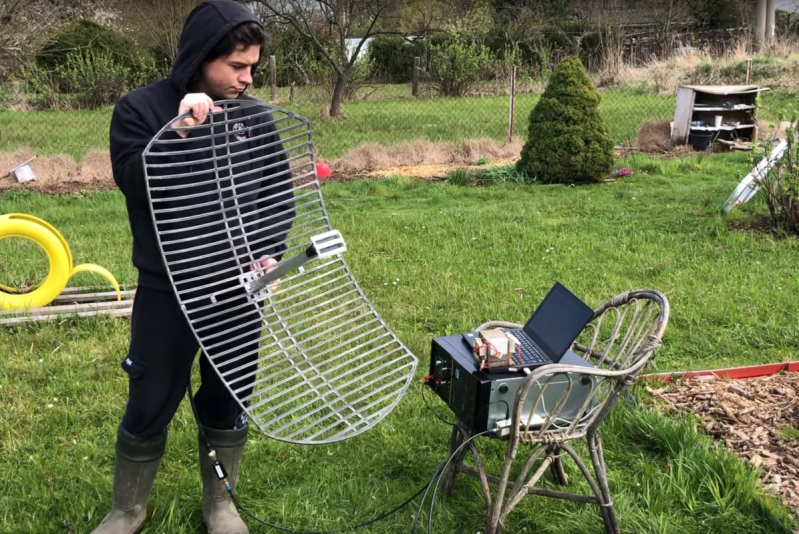Over the past century or so we’ve come up with some clever ways of manipulating photons to do all kinds of interesting things. From lighting to televisions and computer screens to communication, including radio and fiber-optics, there’s a lot that can be done with these wave-particles and a lot of overlap in their uses as well. That’s why you can take something like a fairly standard Wi-Fi antenna meant for fairly short-range communication and use it for some other interesting tasks like downloading satellite data.
Weather satellites specifically use about the same frequency range as Wi-Fi, but need a bit of help to span the enormous distance. Normally Wi-Fi only has a range in the tens of meters, but attaching a parabolic dish to an antenna can increase the range by several orders of magnitude. The dish [dereksgc] found is meant for long-range Wi-Fi networking but got these parabolic reflectors specifically to track satellites and download the information they send back to earth. Weather satellites are generally the target here, and although the photons here are slightly less energy at 1.7 GHz, this is close enough to the 2.4 GHz antenna design for Wi-Fi to be perfectly workable and presumably will work even better in the S-band at around 2.2 GHz.
For this to work, [dereksgc] isn’t even using a dedicated tracking system to aim the dish at the satellites automatically; just holding it by hand is enough to get a readable signal from the satellite, especially if the satellite is in a geostationary orbit. You’ll likely have better results with something a little more precise and automated, but for a quick and easy solution a surprisingly small amount of gear is actually needed for satellite communication.















I got that same dish, found it super cheap in maybe 2017. You can definitely put it to use like this, I’ll vouch for that
Doubles as a grill in an emergency.
Some car from the 1930s has a naked radiator.
I rekon it’s from a truck, coz eeez too big fo’ a car.
Not too big for a Buick
Well, it’s not your dad’s Oldsmobile grille.
The article title should have had a “Part 1” added to it if this is to be a tutorial. He does mention “the next part” where hopefully he concludes with equipment used (SDR ,etc.), satellites received from and final images produced. Twenty minutes talking about a barbeque grill antenna was almost a waste unless there is more to come. Hopefully HD will not let this be a one off one part episode.
There’s always the beachball QO100 antenna: https://dalybulge.blogspot.com/2023/09/diy-gatr-ball-antenna-for-qo100.html
“although the photons here are slightly less energy at 1.7 GHz, this is close enough to the 2.4 GHz antenna design for Wi-Fi to be perfectly workable”
Photons????
As strange as it may seem, radio waves are also photons. Light and radio waves are electromagnetic waves – the only difference is the wavelength. Since you can consider light to be made of photons, you can also view radio waves as photons.
https://en.wikipedia.org/wiki/Radio_wave#Generation_and_reception
Looking forward to part 2. I used to work APT on GOES all the time in my younger years with no problem. LRPT and HRPT have been difficult for me to work with, though.
why not using othernet.is ? and tell me
why do so few satellites send open data to earth?
After all, it would be enough if they broadcast like outhernet public data in a crisis situation.
There’s a problem, satellites are shifting, for example, 2% of their bandwidth to broadcast public data, such as news, radio, mastodon
There really needs to be a finished project before posting like it’s done. It’s like giving a nobel peace prize to someone who only said, “I’m gonna make the world peaceful”
Results required.